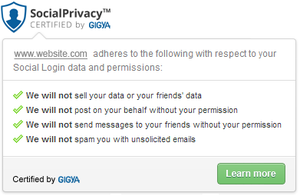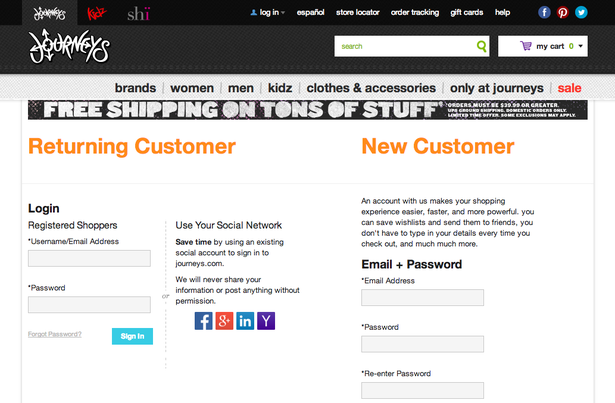Three’s a crowd, and I’m not referring to failed 80s sitcoms. I’m talking about customer relationships.
Yet according to a study by the UC Berkeley Center for Law and Technology, 85% of the top 1,000 websites have cookies set by a third party.
Propelled by widespread anonymity in the early days of the Internet, third-party cookies have undoubtedly become a staple for many marketers, tracking consumer behaviors across the web with the promise of uncovering invaluable insights.
Not only is this an invasion of consumer privacy (more on that later), but it also prevents businesses from truly knowing and understanding their customers.
First-party data, transparently collected via voluntary user registration, on-site activities and interactions, removes data brokers as middlemen, establishing direct brand and consumer connections and fostering 1:1 relationships.
Let’s take a look at three ways that third-party cookies are hurting your customer relationships, and how first-party data can be collected and used to improve audience understanding and user experiences.
Multiple devices
In a time when consumers would sit down at their desks in front of their computers and dial-in to the internet, third-party cookies functioned to give marketers a fairly thorough picture of consumers’ web browsing habits.
But consumers today don’t ‘log online,’ they live online. According to Mary Meeker’s 2014 Internet Trends report, on average, people in the US spend over seven hours each day looking at screens – that includes 103 minutes in front of computers, 151 minutes using smartphones and 43 minutes with tablets (Quartz).
As if Google searches and browsing behaviors weren’t limiting enough, cookies only function across individual devices. Businesses still depending on third parties for customer insights are left with an increasingly fragmented view of their customers, making it impossible to build cohesive, end-to-end customer journeys.
Go from third to first: Stop relying on cookies and start capturing consumer identity via site registration.
Giving visitors the option to login to your site or app gives your brand first-party, permission-based access to customer data, enabling you to tie all on-site, cross-channel activities to a single user identity and create cohesive customer journeys across devices. Establishing consumer identity also solves the growing issue of shared devices.
Data privacy
Yes, third-party cookies track consumer search and browsing behaviors across the web. But that’s not even the worst part. Many consumers don’t even know that they are being watched or that their data is being bought and sold.
And those that do know have made it clear they don’t approve: 65% of consumers delete their cookies, and 39% have changed their browser settings to block them altogether (MediaPost).
As more consumers catch-on about cookies, third parties are taking even more invasive approaches to get their hands on user data. Canvas Fingerprinting, which essentially attaches hidden number identifiers to user devices and is extremely difficult to disable, is just one example of emerging 3rd party practices.

Go from third to first: Earn your customers’ trust by openly informing them of the data points you are looking to collect, as well as how this information will be used and that you will never sell it to third parties.
Don’t ask for all desired data points the moment a consumer visits your site; adopt a progressive profiling approach that enables you to gather a greater depth and variety of information over time. Not only does this improve consumer relationships, but it also increases the accuracy of the data you collect.
Relevant experiences
Think about it: if someone were to try to characterize you based on your browsing history, what would you look like? Does searching for “Louis Vuitton” make you rich? Probably not. Does clicking on an ad featuring a cute baby make you a mother? Or even a woman, for that matter? Not necessarily.
The truth is that most third party profiles have consumers all wrong. Particularly with the rise of mobile and shared devices, arbitrary ad clicks and search queries are hardly a reliable means of consumer identification.
This then begs the question, how can you have a relationship with a customer if you don’t even know who she is? With a recent Responsys study revealing that 34% of consumers say they have “broken up” with a brand due to receiving poor, disruptive or irrelevant marketing messages, the answer is, you simply can’t.
Go from third to first: Prompting users to sign-in to your site or app using an existing social media account makes consumer identity verification seamless, especially via mobile device, while giving your brand permission-based access to social data points including favorite brands, activities, relationship status and more.

However, even identity-related data is difficult to manage without a single view of consumers across channels. Put a robust master database in place than can consolidate insights across your marketing channels to give you a complete, real-time picture of your customer base.
Third party data and collection techniques are deeply embedded in many businesses today. Extracting these practices from your marketing efforts will take diligence, but it’s a necessary transformation for brands looking to establish 1:1 relationships with their customers. Three’s a crowd.
























No Comments